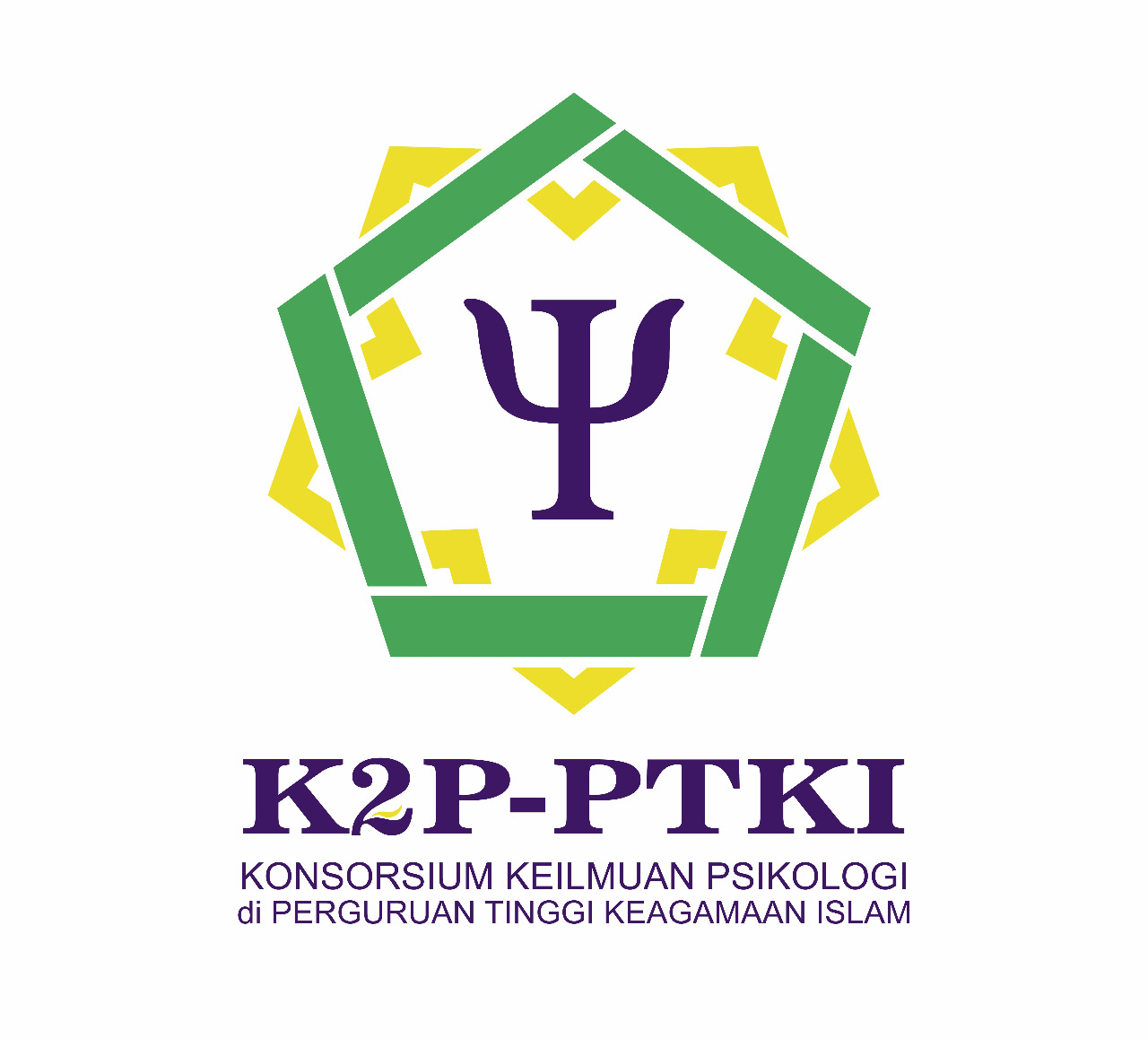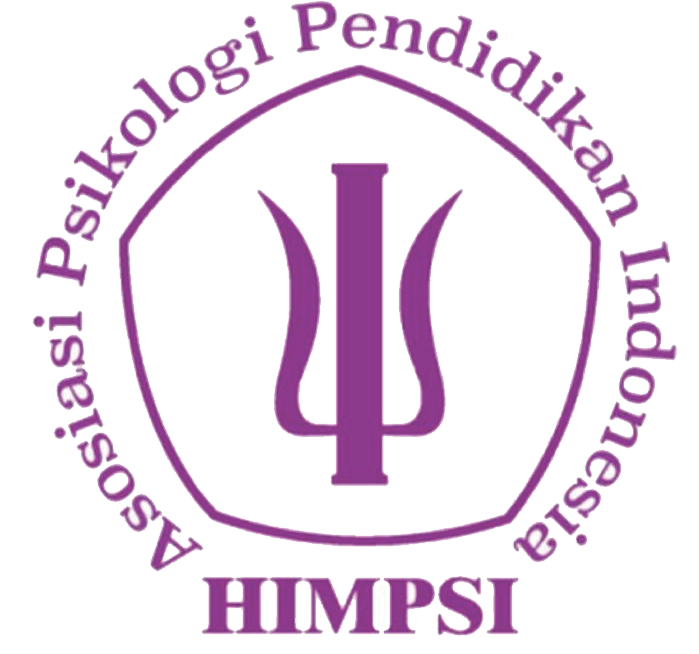Understanding “Contemporary Hijrah ” phenomenon: A Study of the effect of religiosity on self-esteem
Abstract
Abstract: A religious phenomenon currently rife in Indonesia is called “hijrah kekinian” (the contemporary hijrah); it is the religious conversion of Muslims living in big cities in Indonesia. Hundreds of Muslims, from various life paths, renew their lifestyle to be more “Islamic”. The author of this article is curious to understand, from a religious, psychological perspective, what psychological consequences are experienced by the perpetrators of the “hijrah kekinian”. Does the increasing religiosity experienced by them influence their self-esteem, which also causes them to be more self-confident and increasingly steadfast and committed to their religious conversion? For this reason, 117 “hijrah kekinian” actors with an age range of 18-40 and above residing in two big administrative cities—South Jakarta and South Tangerang—were sampled and investigated. This study uses quantitative methods, while the sampling technique used is proportional random sampling. The research found that the religiosity variable contributed significantly to the self-esteem variable and had a strong correlation with a correlation coefficient of 0.634, which implies that religious transformation possibly raises self-esteem levels. With the rise, more religious commitment is also increased.
Keywords: hijrah kekinian (contemporary hijrah); religiosity; self-esteem
Abstrak: Fenomena keagamaan yang marak terjadi di Indonesia saat ini disebut “hijrah kekinian” (hijrah kekinian); itu adalah konversi agama umat Islam yang tinggal di kota-kota besar di Indonesia. Ratusan umat Islam, dari berbagai jalur kehidupan, memperbaharui gaya hidup mereka menjadi lebih “Islami”. tujuan penelitian ini untuk peningkatan religiusitas yang dialami oleh mereka mempengaruhi harga diri mereka, yang juga menyebabkan mereka menjadi lebih percaya diri dan semakin teguh dan berkomitmen pada konversi agama mereka. penelitian ini memahami dari perspektif agama, psikologis, konsekuensi psikologis apa yang dialami oleh para pelaku “hijrah kekinian”. Oleh karena itu, 117 pelaku “hijrah kekinian” dengan rentang usia 18-40 tahun ke atas yang tinggal di dua kota administratif besar—Jakarta Selatan dan Tangerang Selatan—diambil sampelnya dan diinvestigasi. Penelitian ini menggunakan metode kuantitatif, sedangkan teknik pengambilan sampel yang digunakan adalah proporsional random sampling. Hasil penelitian menemukan bahwa variabel religiositas memberikan kontribusi yang signifikan terhadap variabel harga diri dan memiliki korelasi yang kuat dengan koefisien korelasi sebesar 0,634, yang berarti bahwa transformasi agama mungkin meningkatkan tingkat harga diri. Dengan naiknya, komitmen beragama juga meningkat.
Kata kunci: hijrah kekinian; religiusitas; harga diri
Keywords
Full Text:
PDFReferences
Abdel-Khalek, A. M. (2011). Religiosity, subjective well-being, self-esteem, and anxiety among Kuwaiti Muslim adolescents. Mental Health, Religion and Culture, 14(2), 129–140. https://doi.org/10.1080/13674670903456463
Ancok, J., & Suroso, F. N. (2001). Psikologi Islami. Pustaka Pelajar.
Bagley, C., & Mallick, K. (1997). Self-esteem and religiosity: Comparison of 13- to 15-year-old students in Catholic and public junior high schools. Canadian Journal of Education, 22(1), 89–92. https://doi.org/10.2307/1585814
Bonaguidi, F., Michelassi, C., Filipponi, F., & Rovai, D. (2010). Religiosity associated with prolonged survival in liver transplant recipients. Liver Transplantation, 16(10), 1158–1163. https://doi.org/10.1002/lt.22122
Branden, N. (1987). How to raise your self-esteem. Bantam Books.
Branden, N. (2011). The Six Pillars of Self-Esteem. Bantam Books.
Fitri, R. N., & Jayanti, I. R. (2020). Fenomena Seleb Hijrah: Tendensi Ekslusivisme dan Kemunculan Kelompok Sosial Baru. MUHARRIK: Jurnal Dakwah Dan Sosial, 3(01), 1–17. https://doi.org/10.37680/muharrik.v3i01.222
Gebauer, J. E., Sedikides, C., & Neberich, W. (2012). Religiosity, social self-esteem, and psychological adjustment: On the cross-cultural specificity of the psychological benefits of religiosity. Psychological Science, 23(2), 158–160. https://doi.org/10.1177/0956797611427045
Ghafoor, H., Schulz, S. M., & Mohsin, H. (2018). Does religiosity ameliorate the negative impact of obsessive-compulsive disorder on self-esteem? Mental Health, Religion and Culture, 21(2), 171–179. https://doi.org/10.1080/13674676.2018.1458082
Hasanah, U., Aisa, A., & Madura, I. (2021). Konsep hijrah kaum millenial (Kajian Media dan Dakwah). Al-MUNZIR, 14(2), 137–152.
Hood, R. W., Hill, P. C., & Spilka, B. (2009). The Psychology of religion.
Irmansyah, I. (2020). Pemuda Hijrah: Antara pietization dengan lifestyle pada komunitas hijrah yuk ngaji Yogyakarta. Madania: Jurnal Ilmu-Ilmu Keislaman, 10(1), 46. https://doi.org/10.24014/jiik.v10i1.10825
Jung, C. G. (1975). Psychology and Religion: West and East (Gerhard. Adler & R. F. C. Hull, Eds.; Second Edition). Princeton University Press.
Kirana, G. T., & Maman, C. (2018). makna hijrah bagi komunitas pemuda hijrah (studi fenomenologi komunikasi makna hijrah bagi jamaah di lingkungan masjid TSM Bandung). Prosiding Hubungan Masyarakat, 4(2), 369–375. https://karyailmiah.unisba.ac.id/index.php/humas/article/download/10431/pdf_1
Krause, N. (1995). Religiosity and self-esteem among older adults. Journals of Gerontology - Series B Psychological Sciences and Social Sciences, 50 B(5), P236–P246. https://doi.org/10.1093/geronb/50B.5.P236
La Barbera, P. A., & Gürhan, Z. (1997). The role of materialism, religiosity, and demographics in subjective well-being. Psychology and Marketing, 14(1), 71–97. https://doi.org/10.1002/(SICI)1520-6793(199701)14:1<71::AID-MAR5>3.0.CO;2-L
Lestari, S. T. L., & Rahmandani, A. (2019). Pengalaman transformasi diri pada individu yang berhijrah. In Thesis (Issue 3).
Loewenthal, K. M. (2008). The psychology of religion: A short introduction. Oneworld Publications.
McKay, M., & Fanning, P. (2016). Self-esteem : a proven program of cognitive techniques for assessing, Impro...: EBSCOhost. New Harbinger Publications, Inc.
Nasuhi, H. (2021). Tren keberagamaan kaum milenial di Indonesia. PPIM UIN Jakarta.
Paloutzian, R. F. (2017). Invitation to the psychology of religion (third edition). The Guilford Press.
Paulo. (2019). Dinamika psikologis pada pemuda yang berhijrah. In Publikasi Ilmiah (pp. 1–9).
Ringdal, G. I. (1996). Religiosity, quality of life, and survival in cancer patients. Social Indicators Research, 38(2), 193–211. https://doi.org/10.1007/BF00300459
Schaer, H. (1999). Religion and The Cure of Souls in Jung’s Psychology. Routledge.
Sherkat, D. E., & Reed, M. D. (1992). The effects of religion and social support on self-esteem and depression among the suddenly bereaved. Social Indicators Research, 26(3), 259–275. https://doi.org/10.1007/BF00286562
Starbuck, E. D. (1900). The psychology of religion. An Empirical Study of the Growth of Religious Consciousness. Walter Scott, Ltd. .
Thompson, M. S., Thomas, M. E., & Head, R. N. (2012). Race, Socioeconomic Status, and Self-Esteem: The Impact of Religiosity. Sociological Spectrum, 32(5), 385–405. https://doi.org/10.1080/02732173.2012.694792
Vocht, F. De. (2011). The influence of seeking god in the association between religiosity and prolonged survival in liver transplant recipients. Liver Transplantation, 17(2), 215–216. https://doi.org/10.1002/lt.22208
Wildes, K. A., Miller, A. R., de Majors, S. S. M., & Ramirez, A. G. (2009). The religiosity/spirituality of Latina breast cancer survivors and influence on health-related quality of life. Psycho-Oncology, 18(8), 831–840. https://doi.org/10.1002/pon.1475
Yusuf, M. G. (2019). Hijrah dalam membentuk kepribadian muslim: Studi kasus di Komunitas Pemuda Hijrah Shift. In Skripsi Prodi Tasawuf Psikoterapi, Fakultas Ushuluddin, UIN Sunan Gunung Djati Bandung.
Zahara, M. N., Wildan, D., & Komariah, S. (2020). Gerakan Hijrah: Pencarian Identitas Untuk Muslim Milenial di Era Digital. Indonesian Journal of Sociology, Education, and Development, 2(1), 52–65. https://doi.org/10.52483/ijsed.v2i1.21
DOI: https://doi.org/10.18860/psikoislamika.v19i2.15381

This work is licensed under a Creative Commons Attribution-NonCommercial-ShareAlike 4.0 International License.

------------------------------------------------------------------------------------------

pSIKOISLAMIKA by http://ejournal.uin-malang.ac.id/index.php/psiko is licensed under a Creative Commons Attribution-NonCommercial-ShareAlike 4.0 International License.


.jpg)


.jpg)





